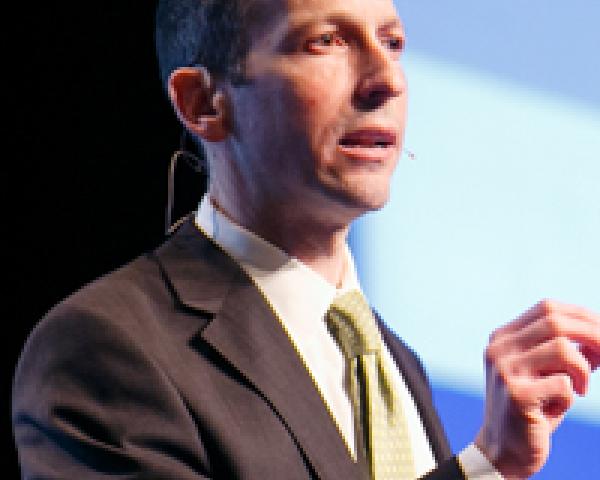These days, companies often have major innovation efforts, but they are almost all lacking a crucial ingredient: the customer.
“Innovate or die,” the saying goes. But as companies try to sharpen their competitive edge with new product and service ideas, many don’t realize that their efforts are fundamentally misguided.
That’s because their innovation process is often missing one essential ingredient: their customers.
Companies establish innovation incubators and idea labs. They hold brainstorming sessions and ideation off-sites. They produce and analyze reams of market research.
But if you wander through any of these innovation-fostering instruments, you’d be hard-pressed to run into an actual customer. What you would see are lots of executives and employees discussing what they think customers need and what products or services will help them.
Seldom, however, do companies directly include customers in the innovation process, and that is a dangerous misstep.
The most brilliant customer insights—the ones that drive game-changing innovation—rarely come from focus group rooms or market research surveys. They come, instead, from observing customers in their natural habitat.
Nothing—not the most intense ideation session nor the most robust market research report—can compare with what you learn by simply going out “into the wild,” watching and listening to customers as they navigate through their day, as they use your products and services and as they (sometimes) bastardize those products and services to accommodate their needs.
Automobile manufacturer Chrysler owes its dominance in the consumer minivan market to this concept of customer observation (technically called “ethnographic research”). For more than 30 years, the company has been the U.S. minivan sales leader, a position fortified over the decades by a tradition of customer-centric innovation.
That approach was perhaps best exemplified by Chrysler’s 1996 introduction of the Dodge Caravan, the first U.S. minivan with two sliding doors. Previous models were equipped with only a passenger-side sliding door.
Whereas other auto manufacturers just asked customers if they’d like a second sliding door (and didn’t sense much interest), Chrysler sent a team into the wild to see with their own eyes what minivan owners struggled with but might never have thought to share in a focus group.
In a 2012 interview, Chris Theodore, one of the lead design engineers for the 1996 Caravan, recalled his team’s approach to the project:
“We really had a great time. We looked at customers. We visited customers. We videotaped customers at rest stops, truck stops and lumber yards. That’s where we came up with all the ideas. From cupholders to tissue holders to rollout seats to the fourth door, these were all things that we saw the customer needed but didn’t volunteer when asked.”
As Theodore and his team witnessed firsthand, when you observe customers in the wild, you discover things that even the best internal brainstorming sessions might not have revealed. But they also saw the inherent limitations in merely asking customers for their opinions, because people tend to have needs and frustrations that they would never think to vocalize to a market researcher.
A great example of that comes from OXO, maker of popular houseware products like Good Grips. As Alex Lee, president of OXO, recounted at a 2008 conference, when the company was considering reinventing the measuring cup, it went to consumers and asked them straight out: “What’s wrong with your measuring cup?”
In response, people mentioned things such as how measuring cups are often made of glass, so if they drop the cup, it breaks. They talked about how measuring cup handles get slippery when your hands are greasy, and how the cup itself can get hot depending on what’s poured into it.
And that was pretty much all people had to say.
Then the OXO team made a simple request of the consumers with whom they met: Show us how you measure with a measuring cup.
And they saw people go through a ritual with which we’re all accustomed. They pour something into the cup, then bend down to check the measurement markings. Then they pour a little more and bend down again. Over and over.
Yet no consumer mentioned this as a problem. It’s an aspect of the measuring cup user experience that was so ingrained in everyone’s psyche that no one thought to question it—except the team at OXO. By observing people actually using the product, they exposed inefficiencies in the customer experience that indicated the measuring cup was indeed ripe for reinvention.
That led to the launch of OXO’s now famous “angled measuring cup”—a cup that lets you read measurement markings by looking straight down, obviating the need to repeatedly fill, bend and check. The company sold millions of these cups in just the first couple of years they were on the market.
It’s worth noting that both OXO and Chrysler, when they sought to incorporate the customer perspective into their innovation efforts, did so by observing and questioning consumers of their product.
Both companies at the time relied heavily on distribution partners (houseware retailers and auto dealers)—entities that they might even have viewed as customers. Yet when it came time to look at the world from the customer’s perspective, while they may have engaged distributors in the exercise, it was never done to the exclusion of the end consumer.
This is a critical point for any company that works through sales intermediaries but wishes to foster customer-centric innovation. You can’t define “the customer” as simply the next person in the distribution chain. By doing so, you might very well miss out on important insights that are difficult to capture in any other way.
While lots of companies tend to exclude customers from their innovation efforts, the oversight is probably even more pronounced within the insurance industry. Many industry executives are puzzled at the idea of observing customers. After all, insurance—unlike cars or housewares—isn’t something people use every day.
Even though insurance may be a relatively low-interaction business, there are still plenty of opportunities to observe customers “using” the product. The key is to reject the traditional and very parochial view that customers only use an insurance product at claim time.
The insurance customer experience is shaped by many types of episodes and touch points: research and purchase, underwriting and issue, online and offline service, billing and payments, premium audits, loss control reviews and, of course, claims.
These are all examples of customers interacting with their insurance product, and as such, they afford meaningful opportunities to observe and learn.
If insurers ever do try to incorporate the customer view, it usually happens relative to product development. And while that’s commendable, true customer-centric innovation requires a broader view around when and where to solicit an external perspective.
That means spending time observing customers when, for example, they receive their initial policy package. Or watching when they try to interpret a premium billing notice and then pay it online. Or seeing what steps they go through to prepare for a premium audit. Or witnessing every stressor they’re saddled with when their business is interrupted or their home is flooded.
Great things happen when you break free from the four walls of your office, venture into the wild and immerse yourself in the customer experience. You see things from an entirely new vantage point. You gain insight into how to enhance your products and services. You spark ideas for satisfying not-yet-obvious customer needs.
There’s no single right way to cultivate innovation within a company. However, no matter what ideation approach you employ, the important thing is to make sure customers are included.
And not just included in a cursory way, with a few focus groups or research surveys. It’s about including their perspective in an immersive way, by observing customers in their natural habitat, as they interact with your products and services.
Once you do that, your company’s innovation engine will really start to fire on all cylinders.


